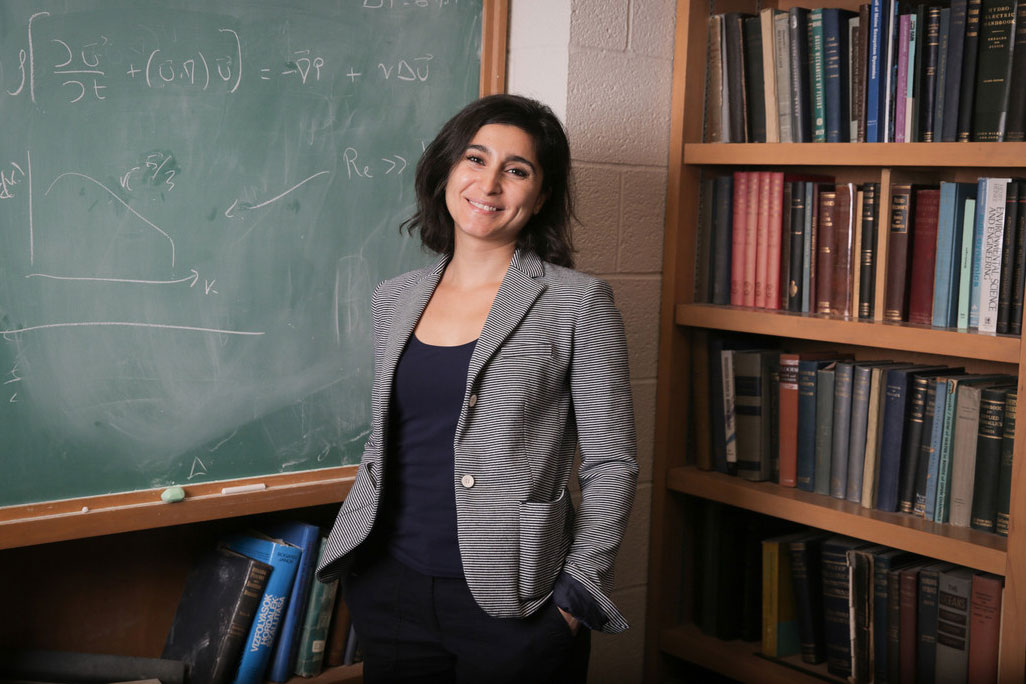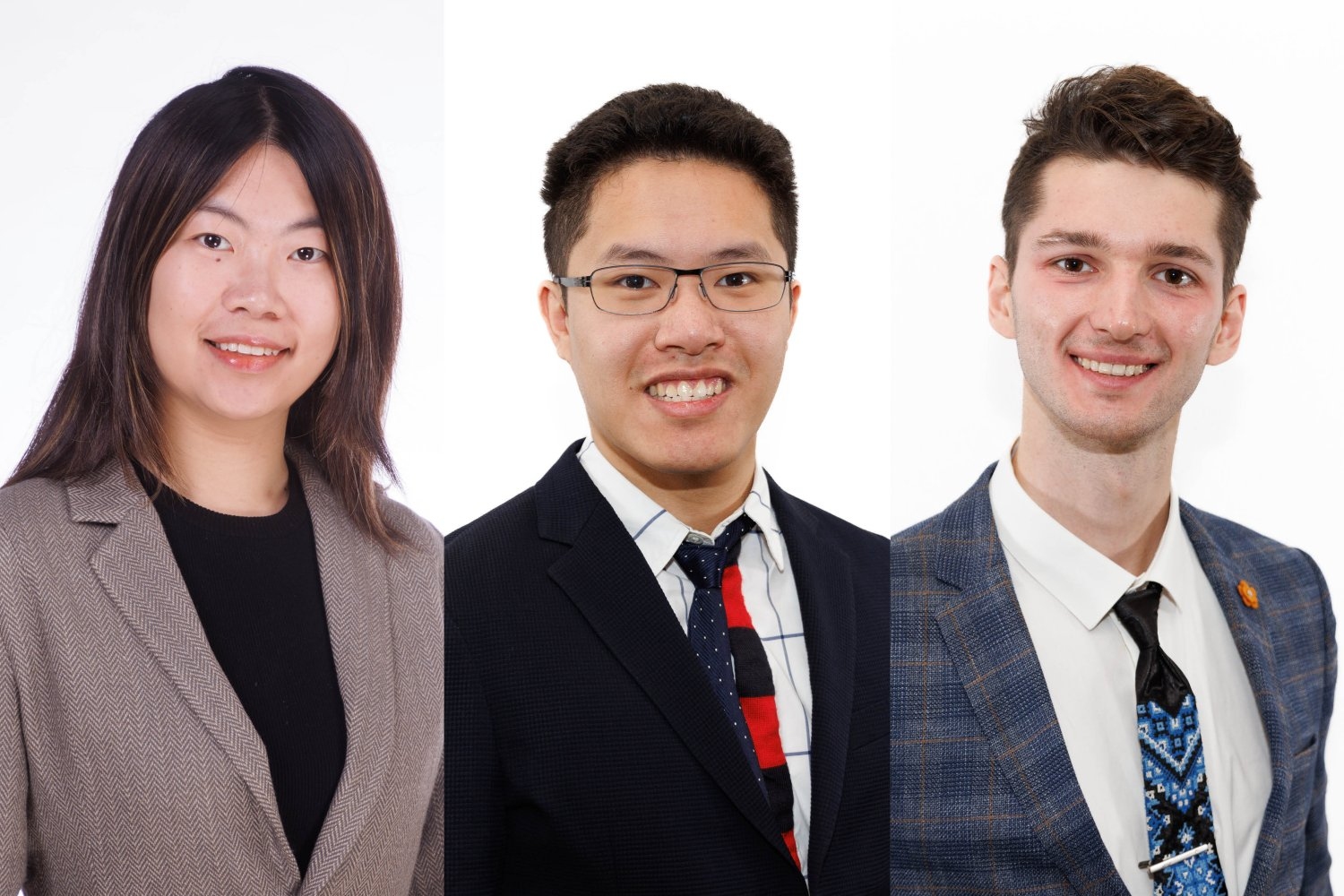Bourouiba awarded National Science Foundation grant to co-launch a research center focused on pandemic prevention

New collaborative NSF research center to improve prediction models of outbreaks and prevention strategies
Prof. Lydia Bourouiba, the director of the MIT Fluid Dynamics of Disease Transmission Laboratory in the Fluids and Health Network, in the MIT Departments of Civil and Environmental Engineering and Mechanical Engineering, and a core faculty member of the Institute for Medical Engineering and Science, will co-direct an $18 million multi-institutional National Science Foundation (NSF) funded center focused on outbreak prevention science.
The grant is funding research and development of better tools, models, and methods for understanding outbreak and pandemic risks in the form of the newly launched NSF Center for Analysis and Prediction of Pandemic Expansion (APPEX). NSF APPEX will research how a small number of infectious cases of a disease can turn into a worldwide pandemic, and decipher how a wide range of factors that might not seem to pose risks under particular conditions can eventually combine to create the perfect conditions for a pandemic. These factors range from medical to environmental factors pertaining to climate and urban settings, human behaviors, socio-economic conditions, and information management. In particular, the new research will foster multidisciplinary collaboration to address these complex challenges in outbreak onset.
“APPEX’s approach is unique as it focuses on creating deep collaborations across many different fields — biomedical sciences, applied mathematics, fluid/bio-physics, ecology, economics, social and environmental sciences,” says Bourouiba. “Researchers from such different fields often work in isolation. The siloes of disciplines present formidable structural barriers when researchers need to work together in a sustainable manner. Yet, breaking these barriers is required when attempting to solve complex problems as those of outbreak and pandemic dynamics.”
To solve this, NSF APPEX brings together a wide range of stakeholders – from fundamental researchers, to industry, to government representatives – to develop new ways of tackling, studying, and mitigating the national and international threats of outbreak and pandemics. Teams propose ideas that are regularly reviewed by panels spanning diverse stakeholder perspectives, ensuring that projects remain focused on both scientific innovation and real-world needs.
Bourouiba says the center is currently having its first Solicitation of Seed Ideas for Working Group Proposals which specifically encourages stakeholder involvement and a focus towards translation to be built-in from the start. “Stakeholders aren’t just there to approve projects at the end but serve as vital resources—like community partners who provide insights that are essential to address outbreak challenges specific to local industry, healthcare, rural/urban design, for example.”
Bourouiba has spent more than a decade researching fundamental processes of how infectious diseases spread and translating the science to improve public policy, nationally and internationally. Her research on fluid dynamics influenced new guidance documents by the World Health Organization and the French Society for Hospital Hygiene that shape how health agencies respond to respiratory infectious diseases. As co-principal investigator on the seven-year grant and Associate Director for Translation, Impact and Policy at NSF APPEX, Prof. Bourouiba joins co-principal investigators and APPEX executive team members, Nina Fefferman, professor of ecology and evolutionary biology at the University of Tennessee Knoxville, Kasim Candan, a computer scientist at Arizona State University, Sadie Ryan, professor of medical geography at University of Florida and Shelby Wilson, applied mathematician at Johns Hopkins University.
Under the APPEX center, Bourouiba’s research thrust will include uncovering blind spots in the modeling and data collection side in addition to innovation in multiscale modeling and integration pertaining to indoor health. One important application area includes how to evaluate risk of and mitigate outbreaks in a rapidly changing environment – two of the domain areas Bourouiba’s research crosses at MIT in the Departments of Civil and Environmental Engineering, Mechanical Engineering, and the Institute for Medical Engineering and Science.
NSF APPEX will extend its efforts beyond research, with a mandate to turn scientific advances into actionable policy recommendations to guide decision-makers. As part of her center portfolio, Bourouiba brought the MIT Policy Lab into the NSF APPEX to co-develop a critical path for maximizing the policy impacts of the center’s research outputs.
“The MIT Policy Lab has been increasing the real-world impact of MIT research for nearly a decade,” says Drew Story, Managing Director of the MIT Policy Lab, “including supporting Prof. Bourouiba in her efforts to improve health agency policies. And while the MIT Policy Lab has worked with scholars from nearly every research discipline, we have always been internally-facing. I can’t think of a better partner than Prof. Bourouiba with whom to expand into our first multi-institution partnership with NSF APPEX.”
The MIT Policy Lab will also support the training of the next generation of researchers and practitioners to learn how to work effectively across traditional disciplinary boundaries and engage the public in understanding how science can prepare for, respond to, and even prevent threats such as pandemics.
Bourouiba is excited about the opportunity and the catalyzing role NSF APPEX can play in changing the future of outbreak and pandemic response and prevention.
“What I hope our center will achieve is to build a strong foundation of infrastructure and training that’s coordinated, integrated, science-based, and community-based. By fostering cross-field scientific literacy, and engaging the full range of stakeholders and expertise across disciplines, we can create bottom-up collaborations that support top-down efforts of risk evaluation and mitigation. This integration is critical to developing effective prevention and response that has the potential to help prevent the kind of tragic loss of life we’ve witnessed from the COVID-19 pandemic.”
Share on Bluesky


